Sourav Pan
Transcript
Hey everyone! Today, we’re diving into the fascinating world of protozoa and how they reproduce. These amazing microorganisms have some truly incredible ways of creating new life.
Protozoa are unicellular, eukaryotic microorganisms. This means they’re single-celled organisms that have a true nucleus and other membrane-bound organelles, just like our own cells, but they exist as complete organisms all by themselves.
What makes protozoa truly remarkable is the incredible diversity of their reproduction methods. They don’t just have one way of making copies of themselves – they have multiple strategies!
Protozoa use both asexual and sexual reproduction methods. Asexual methods include binary fission, multiple fission, budding, and plasmotomy. Sexual methods include conjugation, syngamy, and automixis.
Understanding these reproduction methods is absolutely key to understanding how protozoa survive in different environments, adapt to changing conditions, and play their crucial ecological roles in ecosystems around the world.
These reproduction strategies help protozoa with three critical aspects of life: survival in harsh conditions, adaptation to new environments, and maintaining their important ecological roles as decomposers, nutrient recyclers, and food sources.
So let’s get started on this amazing journey through the world of protozoan reproduction! We’ll explore each method step by step, see real examples, and discover how these tiny organisms have mastered the art of creating new life.
Protozoa are fascinating microscopic organisms that exist all around us. But what exactly are they? Let’s explore these remarkable single-celled creatures.
Protozoa are single-celled eukaryotic organisms. This means each protozoan is made up of just one cell, but that cell contains a true nucleus and various organelles, just like the cells in plants and animals.
It’s important to understand what protozoa are not. They are not fungi, animals, or plants. Protozoa form their own distinct group of organisms with unique characteristics.
Protozoa are incredibly versatile and can be found in many different environments. They thrive in soil, where they help break down organic matter. They live in freshwater and marine environments. Some protozoa are also parasites, living inside other organisms.
Protozoa play crucial roles in ecosystems. Some act as primary producers, creating energy through photosynthesis. Others are decomposers, breaking down dead organic matter. Many serve as nutrient recyclers, helping to cycle important elements through the environment. These tiny organisms are essential for maintaining healthy ecosystems.
Asexual reproduction is one of the most fundamental ways protozoa multiply and survive. Unlike sexual reproduction, this process involves a single parent cell creating identical copies of itself.
The key characteristic of asexual reproduction is that no gametes are involved. There’s no fusion of genetic material from two different cells. Instead, one cell simply divides to create two or more identical daughter cells.
Watch as our parent cell begins the division process. The cell will split to create two identical daughter cells, each containing the exact same genetic material as the original parent.
The result is two identical daughter cells. Each one is a perfect copy of the original parent, with the same genetic material and cellular components. This makes asexual reproduction incredibly efficient for rapid population growth.
There are several different types of asexual reproduction in protozoa. Each method has its own advantages and is used by different species depending on their environment and needs.
In the following sections, we’ll explore each of these asexual reproduction methods in detail, looking at specific examples and understanding how different protozoa use these strategies to thrive in their environments.
Now let’s watch binary fission in action using an amoeba as our example. The amoeba is a perfect model because we can clearly see each step of this fundamental reproductive process.
Step one: The amoeba begins by duplicating its genetic material. Inside the nucleus, the DNA replicates to ensure each daughter cell will receive an identical copy of the genetic information.
Step two: The cell begins to elongate and stretch. As this happens, the duplicated genetic material separates, with one complete set moving to each end of the elongating cell.
Step three: The cytoplasm divides completely, creating two separate cells. Each daughter cell contains identical genetic material and is a perfect clone of the original parent cell.
The result is two identical daughter cells, each a perfect clone of the original parent. This process allows amoebas to reproduce rapidly under favorable conditions, quickly increasing their population size.
This is the power of binary fission – each division doubles the population. Under ideal conditions, a single amoeba can become millions in just a matter of hours through this simple but effective reproductive strategy.
Multiple fission, also known as sporulation, is a fascinating form of asexual reproduction where one parent cell produces many daughter cells all at once.
Unlike binary fission where the cell simply splits in two, multiple fission involves a more complex process. It starts with a single parent cell containing one nucleus.
The first step is nuclear division. The nucleus divides not just once, but multiple times in succession, creating many nuclei within the same cell.
Importantly, during all these nuclear divisions, the cytoplasm of the parent cell remains intact. This is what makes multiple fission different from repeated binary fission.
Finally, the cytoplasm divides around each nucleus, creating individual daughter cells. These cells are then released from the parent cell, ready to live independently.
The result is many genetically identical daughter cells, all produced from a single parent. This method is highly efficient for rapid population growth.
Multiple fission has several key characteristics that make it advantageous for certain protozoa. It allows for rapid population expansion and is particularly common in parasitic species like Plasmodium, which causes malaria.
This reproductive strategy allows organisms to quickly increase their numbers when conditions are favorable, making it an important adaptation for survival and spread.
Plasmodium parasites provide an excellent example of multiple fission in action. These malaria-causing parasites use three distinct types of multiple fission throughout their complex life cycle.
First, let’s examine schizogony, the asexual multiplication cycle. A single Plasmodium parasite enters a human red blood cell and begins to reproduce rapidly.
The parasite nucleus divides multiple times, creating many daughter parasites within the cell. When the red blood cell bursts, it releases twelve to twenty-four new parasites, each capable of infecting another cell.
This exponential multiplication is what causes the rapid onset of malaria symptoms in humans.
The second type is gamogony, where some parasites develop into specialized sex cells called gametes. Male and female gametes are produced, preparing for sexual reproduction.
Finally, sporogony occurs in the mosquito after sexual fusion. The resulting zygote undergoes massive multiple fission, producing thousands of sporozoites that can infect new human hosts.
These three types of multiple fission give Plasmodium an enormous reproductive advantage. Schizogony multiplies parasites twelve to twenty-four fold in human cells, gamogony prepares for genetic diversity, and sporogony creates thousands of new infective forms in mosquitoes.
This reproductive strategy explains why malaria can spread so rapidly and why Plasmodium is such a successful parasite in both human and mosquito hosts.
Plasmotomy is a fascinating and unique form of asexual reproduction that works quite differently from the binary fission we’ve seen before.
The key characteristic of plasmotomy is that the cell body divides without the nucleus dividing. This is completely different from binary fission.
Let’s compare this to binary fission. In binary fission, both the cell body and the nucleus divide to create two identical cells.
In plasmotomy, we start with a multinucleate cell – a cell that contains multiple nuclei. When division occurs, the nuclei stay intact and don’t divide.
Now let’s watch the plasmotomy process step by step. The cell begins to pinch inward, creating a constriction in the cell membrane.
As the constriction deepens, the cytoplasm separates into two portions. Notice that the nuclei remain unchanged – they don’t divide like in binary fission.
Let’s summarize the key characteristics of plasmotomy. It occurs in multinucleate organisms, where the cell body divides but the nuclei remain intact.
This process is common in ciliates like Opalina, and it typically results in an unequal distribution of nuclei between the daughter cells.
This nuclear preservation makes plasmotomy truly unique among all the reproduction methods we study in protozoans.
Now let’s examine a specific example of plasmotomy in action. Opalina is a fascinating ciliate protozoan that lives in the digestive systems of amphibians like frogs and toads.
What makes Opalina special is that it contains multiple nuclei scattered throughout its cell body. This multinucleate condition is key to understanding how plasmotomy works in this organism.
During plasmotomy, Opalina divides its cytoplasm without worrying about perfectly distributing its nuclei. Let’s watch this process step by step.
First, the cytoplasm begins to divide down the middle of the cell. Notice that this division doesn’t require the nuclei to line up or divide simultaneously.
As the division continues, the nuclei are distributed between the two forming daughter cells. Importantly, this distribution doesn’t need to be equal – some cells may get more nuclei than others.
The result is two functional daughter cells, each with multiple nuclei but not necessarily the same number. Both cells can survive and continue to reproduce because they have enough nuclei to maintain cellular functions.
This type of reproduction gives Opalina a significant advantage. Since it doesn’t need to precisely divide its nuclei, the process is much faster and simpler than other forms of cell division, while still producing two viable offspring.
Budding is a fascinating form of asexual reproduction where the parent organism produces one or more smaller individuals directly on its body surface. Unlike binary fission where the parent divides completely, in budding the parent cell remains intact while new individuals grow from it.
The budding process begins with a healthy parent cell. This parent organism contains all the genetic material and cellular machinery needed to create new individuals.
Step one: A small outgrowth or bud begins to form on the surface of the parent cell. This bud starts as a tiny protrusion that will gradually grow larger.
Step two: The bud grows larger and develops its own cellular structures, including a nucleus. During this stage, the bud receives nutrients and genetic material from the parent cell through their connection.
Step three: Once the bud has fully developed, it separates from the parent cell and becomes an independent organism. The parent cell remains intact and can produce more buds in the future.
A single parent cell can produce multiple buds at the same time. This allows for rapid population growth when environmental conditions are favorable. Each bud develops independently and will eventually separate to form its own organism.
Suctoria are excellent examples of organisms that reproduce through budding. These ciliated protozoans are sessile, meaning they attach to surfaces and remain in one place. They use specialized tentacles to capture and feed on other microorganisms. When conditions are right, they produce buds that will eventually swim away to find new locations to settle.
Budding offers several advantages for protozoan reproduction. It allows for rapid population growth since no mate is required. The parent organism survives the process and can continue producing more offspring. It’s also energy efficient compared to other forms of reproduction, making it ideal when resources are abundant.
Budding represents an elegant solution for asexual reproduction, allowing organisms like Suctoria to efficiently create new individuals while maintaining the parent organism. This process contributes significantly to the rapid population dynamics we observe in protozoan communities.
Suctoria are fascinating protozoa that demonstrate budding reproduction. Unlike free-swimming protozoa, adult Suctoria are sessile, meaning they attach to surfaces and remain stationary.
What makes Suctoria unique is their feeding method. They have specialized tentacles with sucking discs at the tips. These tentacles capture prey organisms like ciliates and other small protozoa.
Now let’s observe the budding process. A small bud begins to form on the surface of the parent Suctoria. This bud will eventually develop into a completely new individual.
As the bud grows larger, it begins to develop its own internal structures. The parent cell provides nutrients and cellular material to support the developing bud.
The most remarkable part happens next. The mature bud develops cilia and becomes a free-swimming form called a ‘swarmer’. This is very different from the sessile parent!
Finally, the swarmer detaches from the parent and swims away. It will eventually find a suitable surface, lose its cilia, develop tentacles, and become a new sessile Suctoria, completing the reproductive cycle.
This budding process allows Suctoria to reproduce asexually while creating offspring that can disperse to new locations. The parent remains attached and can produce multiple buds over time.
Sexual reproduction in protozoa is fundamentally different from the asexual methods we’ve seen. Instead of creating identical copies, sexual reproduction involves mixing genetic material to create genetic diversity.
Sexual reproduction involves two individual protozoa, each carrying their own unique genetic material. Unlike asexual reproduction where one cell simply divides, here we have two separate organisms.
The key concept in sexual reproduction is the exchange or fusion of genetic material. This can happen through direct fusion of reproductive cells called gametes, or through temporary contact where genetic material is exchanged.
This genetic mixing creates something completely new – offspring that are genetically different from both parents. This is the fundamental advantage of sexual reproduction.
When genetic material from two different protozoa combines, it creates new genetic combinations. The offspring receives some traits from each parent, but the specific combination is unique.
This genetic diversity is crucial for survival. It helps populations adapt to changing environments and resist diseases. Now let’s look at the three main types of sexual reproduction in protozoa.
The first type is Syngamy, where gametes completely fuse together. The second is Conjugation, where organisms temporarily connect to exchange genetic material. The third is Automixis, a form of self-fertilization.
Each of these methods achieves the same goal: creating genetic diversity that helps protozoan populations survive and thrive in changing environments. In the following sections, we’ll explore each type in detail with specific examples.
Syngamy represents the most complete form of sexual reproduction in protozoa. Unlike other reproductive methods we’ve seen, syngamy involves the complete and permanent fusion of two gametes to create a single new organism called a zygote.
Let’s visualize the syngamy process. We start with two separate gametes, each containing their own genetic material. These reproductive cells are about to undergo complete fusion.
During syngamy, the two gametes move toward each other and begin the fusion process. This is different from conjugation because the fusion is permanent and complete.
The gametes fuse completely, combining their genetic material to form a single zygote. This new cell contains genetic information from both parent gametes, creating genetic diversity.
Syngamy can occur in several different ways, depending on the source and characteristics of the gametes involved. Let’s explore the main types.
Autogamy occurs when both gametes come from the same parent cell. This is essentially a form of self-fertilization within a single organism.
Exogamy is the opposite – gametes come from different parent cells or organisms. This promotes genetic diversity by mixing genetic material from separate sources.
Hologamy involves the fusion of entire mature organisms rather than just specialized gametes. The whole organisms act as reproductive cells.
Isogamy occurs when the fusing gametes are similar in size and structure. In contrast, anisogamy involves gametes of different sizes – typically a larger egg and smaller sperm.
We’ve already seen Plasmodium in multiple fission, but this parasite also uses syngamy during its sexual reproduction phase. In the mosquito host, male and female Plasmodium gametes undergo syngamy to form zygotes that eventually develop into the infectious forms transmitted back to humans.
Syngamy is crucial for genetic diversity in protozoan populations. By completely fusing genetic material from different sources, it creates new genetic combinations that help species adapt to changing environments and resist threats like immune responses or drug treatments.
Now we see syngamy in action with Plasmodium, the malaria parasite. This crucial process happens inside a mosquito’s gut after the mosquito has taken a blood meal from an infected person.
Inside the mosquito’s gut, we find two types of gametes. The male gamete, called a microgamete, is small and highly mobile with flagella for swimming. The female gamete, or macrogamete, is much larger and contains nutrients needed for development.
The male gamete swims toward the female gamete using its flagella. When they meet, syngamy begins – the complete fusion of these two reproductive cells into a single organism.
During fusion, the male gamete penetrates the female gamete’s membrane. Their nuclei combine, mixing genetic material from both parents. This creates a diploid zygote with a complete set of chromosomes.
The newly formed zygote doesn’t stay still for long. It quickly begins to develop and transform into a motile form called an ookinete. This elongated, worm-like stage can move and penetrate tissues.
The ookinete now performs a critical task – it must penetrate the mosquito’s gut wall to continue the parasite’s life cycle. Using specialized enzymes and physical force, it burrows through the gut lining.
Once through the gut wall, the ookinete will develop into an oocyst, continuing the complex life cycle of malaria. This syngamy process in the mosquito is essential – without it, the parasite cannot complete its life cycle and spread to new human hosts.
This example shows how syngamy is not just about reproduction, but about enabling complex life cycles that allow parasites to move between different host organisms.
Conjugation is a fascinating form of genetic exchange in protozoa. Unlike permanent fusion, conjugation is a temporary union where two individuals briefly connect to exchange nuclear material, like a genetic handshake that increases diversity without reproduction.
Conjugation begins when two compatible protozoan cells, often ciliates, come into contact. Each cell has its own nucleus containing genetic material that will be exchanged during this process.
The cells move toward each other, attracted by chemical signals. This is the beginning of their temporary union for genetic exchange.
The cells form a temporary cytoplasmic bridge, connecting their cell bodies. This bridge allows for the exchange of nuclear material while keeping the cells as separate individuals.
Through the bridge, nuclear material moves from each cell to the other. This exchange creates genetic diversity as each cell receives new genetic information from its partner.
After the exchange is complete, the cytoplasmic bridge dissolves and the two cells separate. Each cell now contains a mix of genetic material from both partners, increasing their genetic diversity.
Conjugation has several key features that distinguish it from other forms of reproduction. It’s a temporary process that exchanges genetic material without creating new individuals, and it’s particularly common in ciliated protozoa like Paramecium.
This genetic exchange mechanism allows protozoa to maintain genetic diversity within their populations without the energy cost of producing offspring, making it an efficient evolutionary strategy.
Now we’ll examine a specific example of conjugation in Paramecium, one of the most well-studied ciliated protozoans. This process demonstrates how these single-celled organisms exchange genetic material to increase diversity.
Conjugation begins when two compatible Paramecium cells come together and align side by side. Each cell contains a large macronucleus that controls daily functions and a small micronucleus that contains genetic material for reproduction.
The two cells form a cytoplasmic bridge, creating a temporary connection between them. This bridge allows the exchange of genetic material while keeping the cells as separate individuals.
Through this bridge, the cells exchange their micronuclei. Each micronucleus travels from its original cell to the partner cell, carrying unique genetic information that will create genetic diversity.
The exchanged micronuclei then fuse with the macronuclei in their new host cells. This fusion combines genetic material from both parent cells, creating new genetic combinations within each cell.
After fusion is complete, the cells separate and the cytoplasmic bridge dissolves. Each Paramecium now contains genetically modified nuclei and will produce genetically diverse daughter cells when it undergoes its next division.
This conjugation process in Paramecium is crucial for maintaining genetic health in populations. Unlike simple cell division, conjugation creates new genetic combinations that help these organisms adapt to changing environmental conditions and avoid the accumulation of harmful mutations.
Automixis is a fascinating form of sexual reproduction where a single protozoan essentially fertilizes itself. Unlike conjugation where two different individuals exchange genetic material, automixis involves the fusion of gametic nuclei that come from the same organism.
The process begins with a single protozoan cell containing its nucleus. This cell will undergo a special type of nuclear division to create gametic nuclei within itself.
First, the nucleus undergoes meiotic division, similar to what happens in sexual reproduction. This creates specialized gametic nuclei that carry genetic material.
The original nucleus divides to form two gametic nuclei. These nuclei contain genetic material that has undergone recombination, creating some genetic variation even within the same cell.
Now comes the key step of automixis. The two gametic nuclei move toward each other within the same cell and fuse together, creating a diploid nucleus. This is true fertilization, but it happens entirely within one organism.
The result is a diploid nucleus formed through self-fertilization. While this might seem like it wouldn’t create genetic diversity, the meiotic process that created the gametic nuclei still allows for genetic recombination and some variation.
Automixis has several important characteristics. It involves only a single organism, yet it still creates some genetic variation through the meiotic process. It’s considered a form of sexual reproduction because gametic nuclei fuse, even though they come from the same individual. However, automixis is less common than other reproductive methods in protozoa.
Automixis differs from conjugation in that it involves only one individual rather than two. While conjugation requires two protozoa to temporarily unite and exchange genetic material, automixis accomplishes fertilization entirely within a single cell. Both methods contribute to genetic diversity, but through different mechanisms.
Understanding automixis helps us appreciate the diverse strategies protozoa use for reproduction. Even when limited to self-fertilization, these remarkable organisms have evolved ways to maintain genetic diversity and adapt to their environments.
Beyond the main reproductive methods we’ve explored, some protozoa have evolved unique strategies that showcase their remarkable adaptability to different environmental conditions.
Encystment is a survival strategy where protozoa form protective cysts during harsh environmental conditions. The cell develops a thick, resistant wall and enters a dormant state.
When favorable conditions return, the protozoan undergoes excystment, breaking out of the protective cyst to resume active life and reproduction.
Fragmentation occurs when a large, multinucleate protozoan breaks into smaller pieces, each containing one or more nuclei. Each fragment can then develop into a complete organism.
Many protozoa can switch between different reproductive modes based on environmental conditions. In favorable conditions, they reproduce rapidly through asexual methods.
However, when conditions become harsh or stressful, they switch to sexual reproduction to increase genetic diversity and improve survival chances.
These diverse reproductive strategies highlight the remarkable adaptability of protozoa. Their ability to switch between different modes allows them to thrive in changing environments and ensures their survival across diverse ecological niches.
Environmental conditions play a crucial role in protozoan reproduction. Various stressors can dramatically impact how these microscopic organisms reproduce, survive, and thrive in their ecosystems.
Three major environmental stressors significantly impact protozoan reproduction: temperature warming, eutrophication from excess nutrients, and chemical pesticides. Each affects protozoan communities in different ways.
Temperature warming affects protozoan reproduction rates and survival. Higher temperatures can accelerate reproduction in some species while being lethal to others, leading to changes in community composition.
Eutrophication occurs when excess nutrients enter water systems, often from agricultural runoff. This leads to algal blooms that consume oxygen and create toxic conditions, severely disrupting protozoan reproduction cycles.
Pesticides and other chemicals directly interfere with protozoan cellular processes. These toxins can disrupt reproduction, damage cell membranes, and cause population crashes that ripple through the entire food web.
These environmental stressors work together to alter protozoan community structure. Scientists use protozoa as indicator species because their reproductive responses quickly reveal ecosystem health. Understanding these impacts helps us monitor and protect aquatic environments.
Ciliated protozoa have become invaluable model organisms in scientific research. Their unique characteristics make them perfect for studying environmental changes and testing the effects of pollutants.
These organisms are extremely sensitive to environmental shifts. Changes in temperature, pH, oxygen levels, or the presence of pollutants cause immediate and measurable responses in their behavior and physiology.
In laboratory settings, researchers use these protozoa to evaluate the toxicity of various substances. They can quickly determine if a chemical is harmful by observing changes in the organisms’ movement, reproduction, or survival rates.
Common model organisms include Tetrahymena and Paramecium. Scientists study how these organisms respond to heavy metals, pesticides, pharmaceuticals, and other potential contaminants in water systems.
These organisms offer several advantages as research models. They reproduce quickly, are easy to culture in laboratories, respond rapidly to environmental changes, and their responses often predict effects on larger ecosystems.
This makes ciliated protozoa invaluable tools for environmental monitoring, drug testing, and understanding how pollutants affect aquatic ecosystems. Their sensitivity and rapid responses provide early warning systems for environmental health.
Parasitic protozoan viruses, or PPVs, represent a fascinating and complex layer in the world of microbiology. These are viruses that specifically infect protozoan parasites, creating a three-way interaction between virus, parasite, and host.
These viruses approach and infect protozoan parasites, fundamentally altering their biology. The infection process can dramatically change how these parasites behave and interact with their hosts.
PPVs affect protozoan parasites in four major ways. First, they alter morphology – the physical shape and structure of the parasite. Second, they change phenotypes – the observable characteristics and behaviors. Third, they modify pathogenicity – how effectively the parasite causes disease. And fourth, they influence growth rates – how quickly the parasite reproduces.
PPVs act as a double-edged sword in parasite-host relationships. On one side, they can be helpful by reducing parasite virulence, protecting the host, and controlling parasite populations. On the other side, they can be harmful by potentially increasing virulence, enhancing transmission, or causing unpredictable effects.
PPVs create a complex three-way balance between the host, the parasite, and the virus itself. This triangular relationship means that changes in any one component can affect the entire system. Understanding these interactions is crucial for predicting disease outcomes and developing new therapeutic strategies.
Parasitic protozoan viruses represent a new frontier in understanding parasite-host dynamics. As research continues, these tiny entities may hold keys to developing novel treatments and better predicting disease outcomes in parasitic infections.
Research in protozoology is crucial for combating protozoan diseases that affect millions worldwide. Scientists are working on multiple fronts to develop better treatments and prevention strategies.
Researchers face significant challenges including drug resistance in parasites, the global burden of diseases like malaria and sleeping sickness, and the lengthy time required to develop new treatments.
Scientists are pursuing three main research approaches. First, developing new drugs that target specific parasite pathways and overcome resistance. Second, creating vaccines for prevention and long-term protection. Third, improving diagnostics for rapid detection and early treatment.
Technological advances are accelerating research progress. Advanced microscopy provides detailed images of parasite structures. Molecular biology techniques help analyze gene expression and protein functions. Genomics and bioinformatics enable comprehensive genome analysis and drug target identification.
The future of protozoan disease research looks promising. In the near term, we expect improved diagnostic tools and new drug combinations. Medium-term goals include developing vaccines and using artificial intelligence for drug discovery. Long-term vision includes disease elimination programs and advanced gene therapy approaches.
Continued investment in protozoology research is essential for addressing global health challenges and improving lives worldwide. The combination of new technologies and dedicated research efforts offers hope for better treatments and eventual disease control.
We’ve taken an incredible journey through the fascinating world of protozoan reproduction, discovering the amazing diversity of strategies these microscopic organisms use to survive and thrive.
Let’s recap the asexual reproduction methods we discovered. These include binary fission where cells split in two, multiple fission creating many offspring at once, plasmotomy dividing without nuclear involvement, and budding where new individuals grow from the parent.
We also explored sexual reproduction methods that promote genetic diversity. Syngamy involves complete fusion of gametes, conjugation allows temporary exchange of genetic material, and automixis enables self-fertilization when needed.
This incredible diversity of reproductive strategies allows protozoa to adapt to changing environments and survive in virtually every habitat on Earth.
Understanding these reproductive mechanisms is crucial for multiple fields of science and medicine.
This knowledge helps us monitor environmental health, develop treatments for parasitic diseases, and advance our understanding of life itself through scientific research.
From the simple elegance of binary fission to the complex dance of conjugation, protozoa continue to amaze us with their adaptability and resilience.
Thank you for joining me on this incredible journey into the microscopic world of protozoan reproduction. Keep exploring, keep learning, and remember that even the smallest organisms have the most amazing stories to tell!
Study Materials
Reproduction in Protozoa - Sexual reproduction, Asexual reproduction
Helpful: 0%
Related Videos
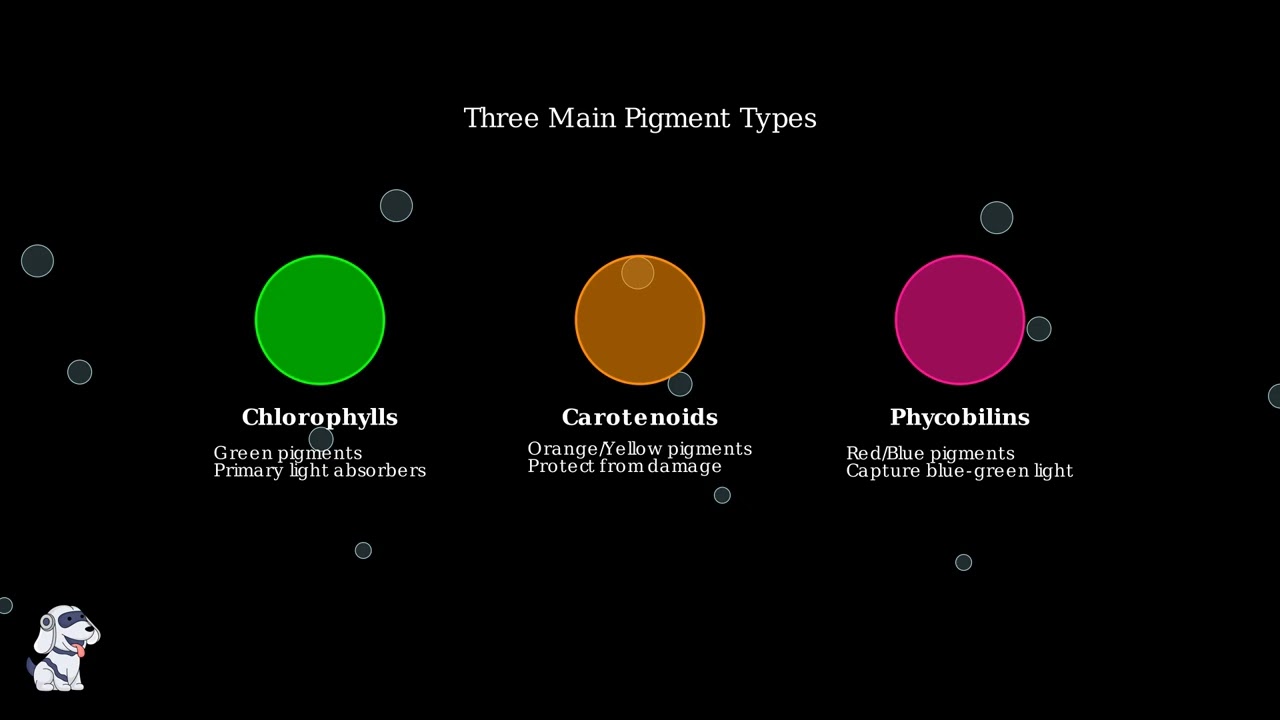


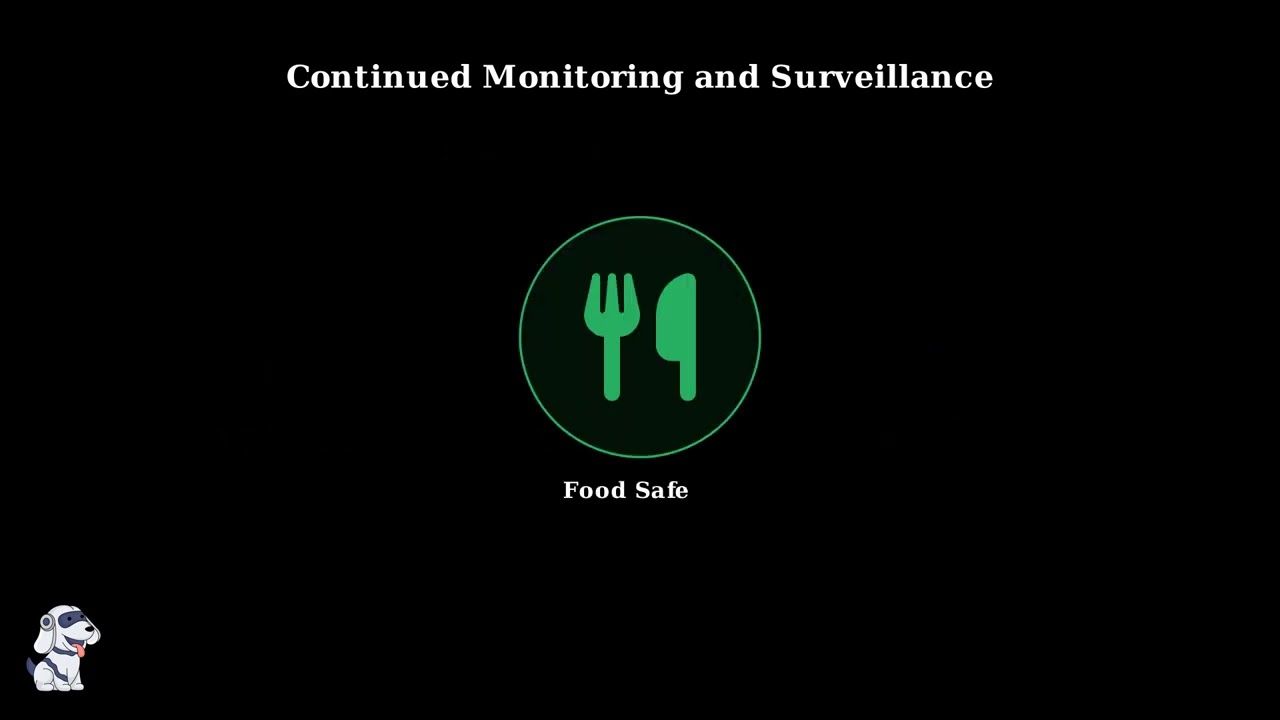

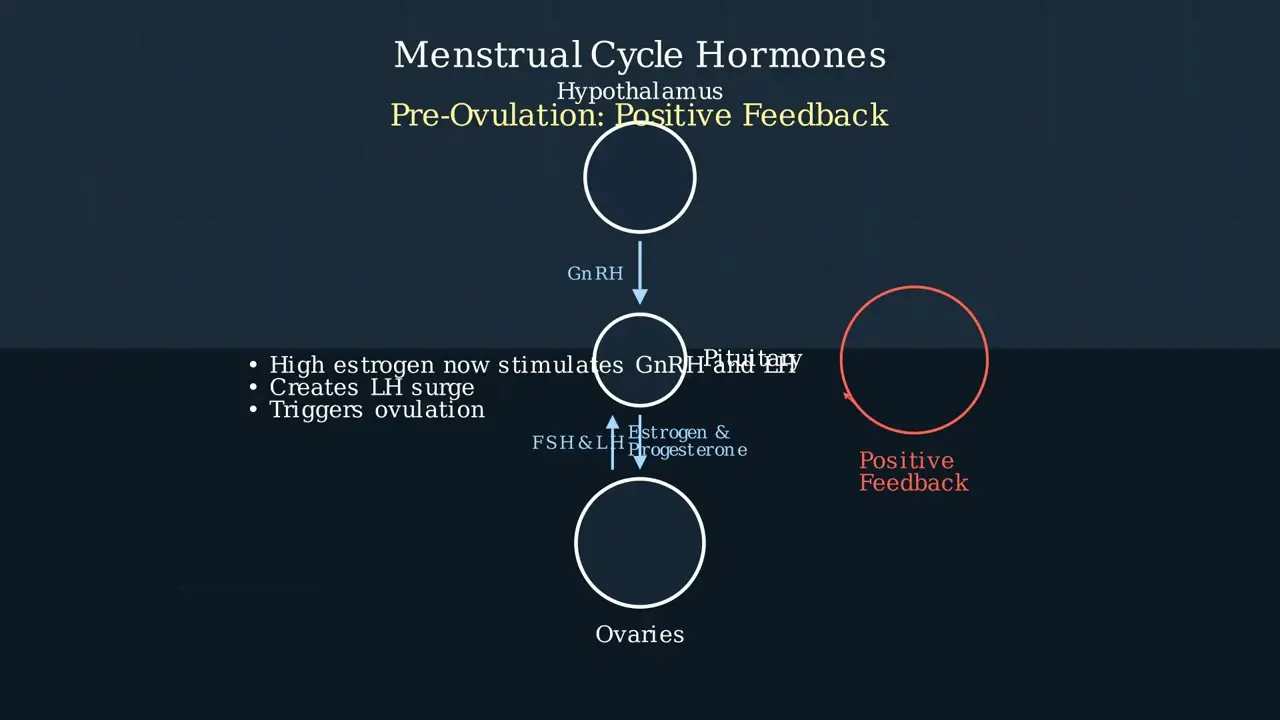


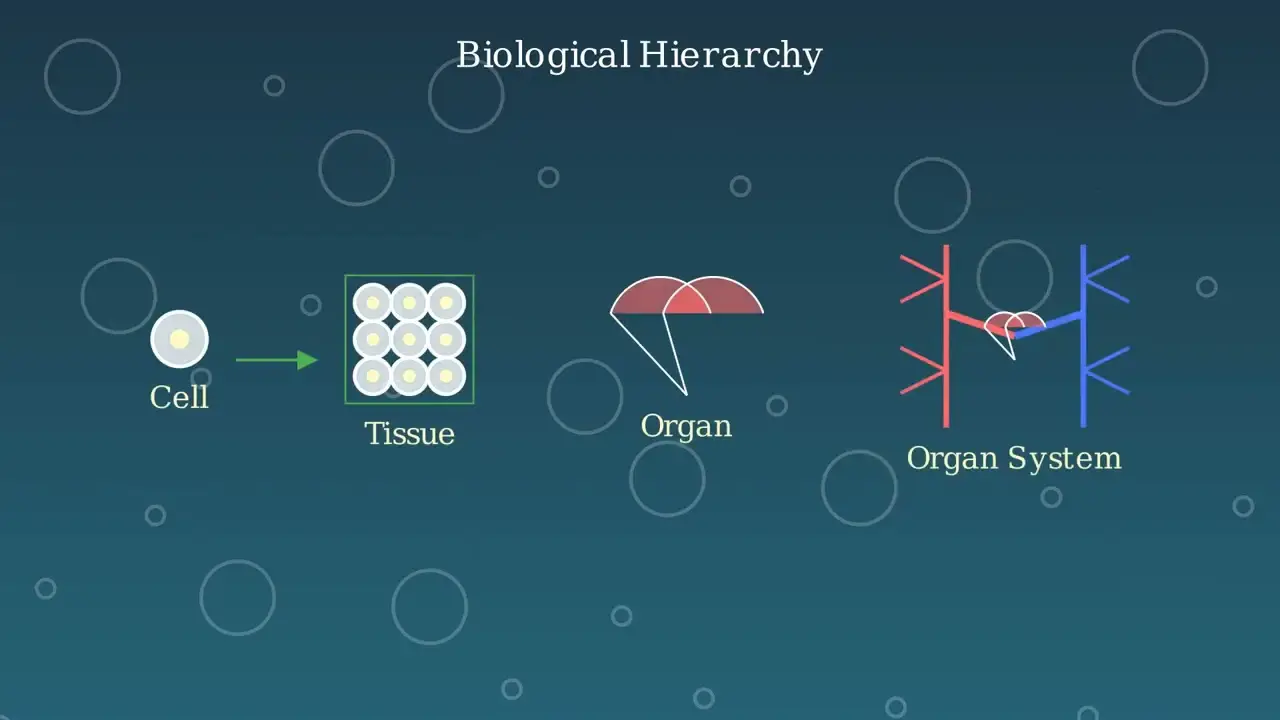
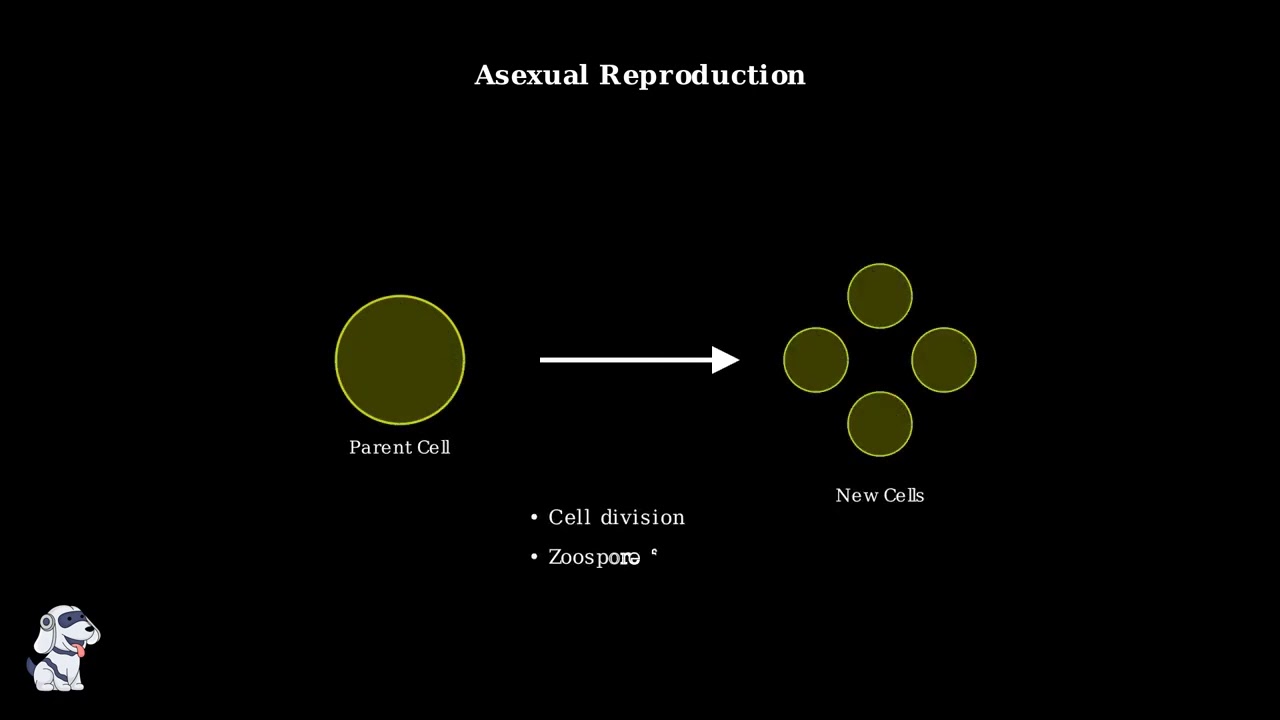
- Text Highlighting: Select any text in the post content to highlight it
- Text Annotation: Select text and add comments with annotations
- Comment Management: Edit or delete your own comments
- Highlight Management: Remove your own highlights
How to use: Simply select any text in the post content above, and you'll see annotation options. Login here or create an account to get started.